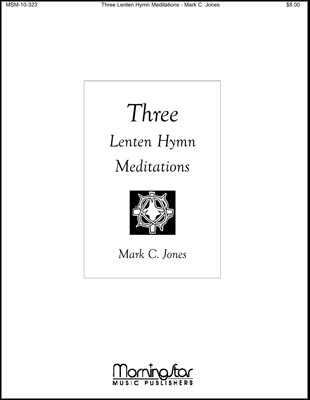- |
User Links
Jesus Lives, and So Do We

Jesus lives, and so do we
Author: Christian F. Gellert (1757); Translator: Calvin Seerveld (1985)Tune: JESUS, MEINE ZUVERSICHT (Crüger)
Published in 1 hymnal
Printable scores: PDF, MusicXMLAudio files: MIDI
Author: Christian F. Gellert
 Gellert, Christian Fürchtegott, son of Christian Gellert, pastor at Hainichen in the Saxon Harz, near Freiberg, was born at Hainichen, July 4, 1715. In 1734 he entered the University of Leipzig as a student of theology, and after completing his course acted for some time as assistant to his father. But then, as now, sermons preached from manuscript were not tolerated in the Lutheran Church, and as his memory was treacherous, he found himself compelled to try some other profession. In 1739 he became domestic tutor to the sons of Herr von Lüttichau, near Dresden, and in 1741 returned to Leipzig to superintend the studies of a nephew at the University. He also resumed his own studies. He graduated M.A. 1744; became in 1745 private tutor or l… Go to person page >
Gellert, Christian Fürchtegott, son of Christian Gellert, pastor at Hainichen in the Saxon Harz, near Freiberg, was born at Hainichen, July 4, 1715. In 1734 he entered the University of Leipzig as a student of theology, and after completing his course acted for some time as assistant to his father. But then, as now, sermons preached from manuscript were not tolerated in the Lutheran Church, and as his memory was treacherous, he found himself compelled to try some other profession. In 1739 he became domestic tutor to the sons of Herr von Lüttichau, near Dresden, and in 1741 returned to Leipzig to superintend the studies of a nephew at the University. He also resumed his own studies. He graduated M.A. 1744; became in 1745 private tutor or l… Go to person page >Translator: Calvin Seerveld
Calvin Seerveld (b. 1930) was professor of aesthetics at the Institute for Christian Studies in Toronto from 1972 until he retired in 1995. Educated at Calvin College, Grand Rapids, Michigan; the University of Michigan; and the Free University of Amsterdam (Ph.D.), he also studied at Basel University in Switzerland, the University of Rome, and the University of Heidelberg. Seerveld began his career by teaching at Bellhaven College in Jackson, Mississippi (1958-1959), and at Trinity Christian College in Palos Heights, Illinois (1959-1972). A fine Christian scholar, fluent in various biblical and modern languages, he is published widely in aesthetics, biblical studies, and philosophy. His books include Take Hold of God and Pull (1966), The Gr… Go to person page >Text Information
| First Line: | Jesus lives, and so do we |
| Title: | Jesus Lives, and So Do We |
| German Title: | Jesus lebt, mit ihm auch ich |
| Author: | Christian F. Gellert (1757) |
| Translator: | Calvin Seerveld (1985) |
| Meter: | 7.8.7.8.7.7 |
| Language: | English |
| Publication Date: | 1982 |
| Copyright: | This text may still be under copyright because it was published in 1982. |
Notes
Scripture References:
st. 1 = John 14:19, 1 Cor. 15:55
st. 4 = Rom. 8:38-39
st. 5 = 1 Cor. 15:54, John 16:33
Christian F. Gellert (b. Hainichen, Saxony, Germany, 1715; d. Leipzig, Germany, 1769) wrote the original German text (“Jesus lebt, mit ihm auch ich”) in six stanzas. Published in Gellert's Geistliche Oden und Lieder (1757), the text is similar to “Jesus, meine Zuversicht,” a chorale text often attributed to Dutch writer Luise Henriette of Brandenburg.
Gellert studied theology at the University of Leipzig and planned to become a pastor. Due to "congenital timidity" and poor memory, which made preaching impossible for him (the Lutheran Church in that era did not encourage pastors to read their sermons but to preach them from memory), he became a tutor. He went on to study philosophy at the University of Leipzig, where he was later appointed to the philosophy faculty. He became a popular lecturer and included among his students Goethe and Lessing. Gellert published various literary works, including the classic Tales and Fables (1746, 1748).
Calvin Seerveld (PHH 22) translated the text in 1985 in Toronto, Ontario; he borrowed the last line of each stanza from the translation by Australian John D. Lang, published in Lang's Aurora Australis (1826). It was first published in the 1987 Psalter Hymnal.
A strong text of comfort in Christ's resurrection, “Jesus Lives and So Do We” was inspired by John 14: 19b, "Because I live, you also will live." Each stanza begins with the Easter faith: Jesus lives! We sing of Christ conquering death (st. 1), of his rule as king over all (st. 2), of his forgiveness of sin (st. 3), and of our security in his love (st. 4-5).
Liturgical Use:
Easter season; to comfort the sick and dying; funerals.
Tune
JESUS, MEINE ZUVERSICHT (Crüger)First published in Johann Crüger's Praxis Pietatis Melica (1653) without attribution, JESUS, MEINE ZUVERSICHT was credited to Crüger (PHH 42) in the 1668 edition of that hymnal. (The later isorhythmic RATISBON is related to this tune; see 34.) JESUS, MEINE ZUVERSICHT is named for its association w…


 My Starred Hymns
My Starred Hymns


